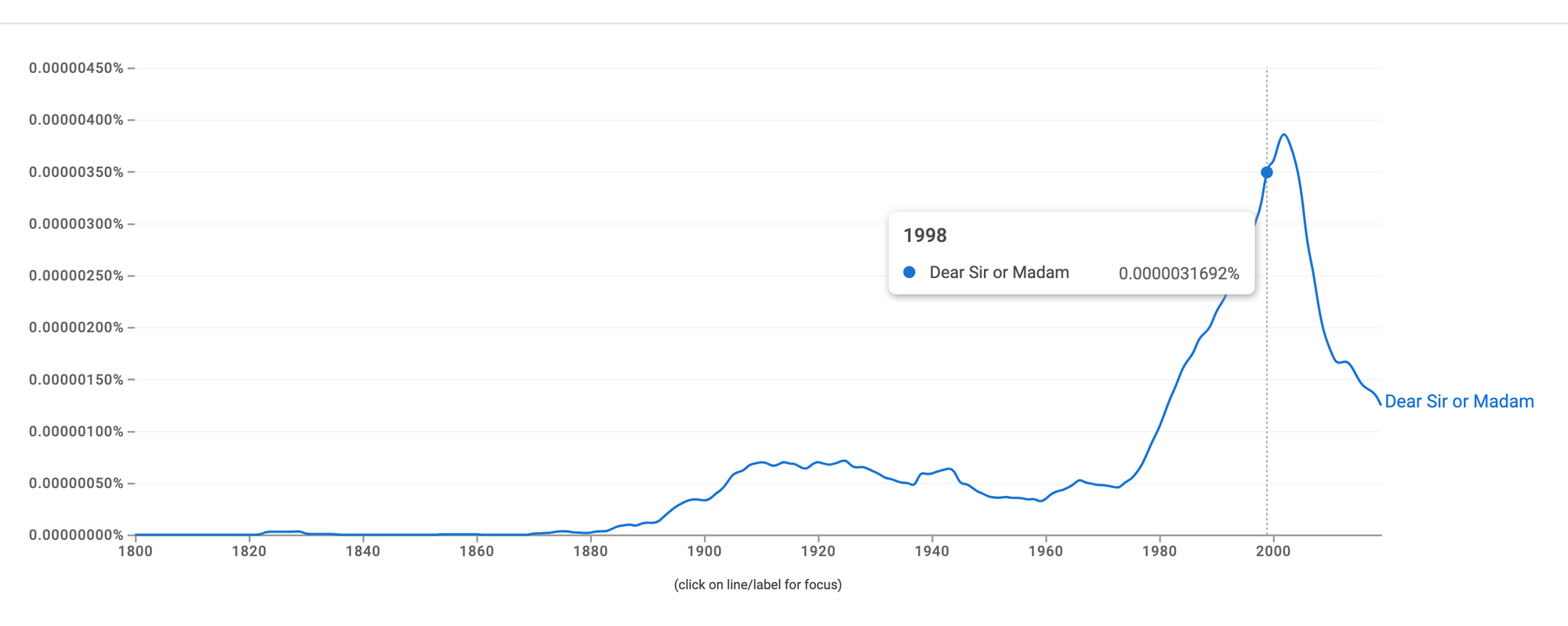In the realm of formal written communication, the phrase "Dear Sir or Madam" holds a distinct place as a courteous salutation, often used at the beginning of documents. This phrase exemplifies politeness and respect, addressing an unknown or unspecified recipient in a professional and inclusive manner.


In this blog post, we'll explore the nuances and best practices surrounding the use of "Dear Sir or Madam" in various contexts, ensuring your communication maintains the highest level of professionalism.
When is Dear Sir or Madam used?
"Dear Sir or Madam" is a salutation used in written correspondence when the identity of the recipient is either unknown or intentionally kept generic. It is a respectful way to address the reader without making gender or identity assumptions.
Helpful tip
It is wrong to put a "s" after sir or madam. Additionally, we cannot subsitute the "or" for an "and". With these two in mind, it would be incorrect to say Dear Sir/s and Madam/s.
Common Idioms/Phrases:
- "To whom it may concern": This is an alternative salutation that serves a similar purpose, used when the sender doesn't know the name or identity of the recipient.
- "Gentlemen and ladies": This phrase is sometimes used to address a mixed-gender audience formally, but it is less common than "Dear Sir or Madam."
Example sentence
- In formal correspondence, it is customary to begin with a polite salutation like "Dear Sir or Madam."
- When writing a cover letter for a job application, it's advisable to use "Dear Sir or Madam" if you don't know the hiring manager's name.
- "Dear Sir or Madam" is often used in business letters when the recipient's gender or identity is unknown.
Dear Sir or Madam's Use
From the below graph, we can see that the use of "Dear Sir or Madam" has decreased since the 2000s.


Is it acceptable to address someone as "Dear Sir or Madam"?
In short, yes, but sparingly, and with some variability in opinion.
Addressing someone as "Dear Sir" or "Dear Madam" might offend them if their gender is uncertain or if you make a mistake.
If you aim to craft an exceptional cover letter for a potential employer or an impressive business letter to a prospective client, you likely want to stand out and showcase your suitability for the role. Knowing the recipient's name, gender, and occupation is a fundamental way to demonstrate your commitment.
"Dear Sir/Madam" in Cover Letters vs. Emails
It's advisable to avoid using "Dear Sir/Madam" in both emails and cover letters. While cover letters are generally more formal than emails, some rules still apply, especially when writing to someone for the first time. Regardless of the format, maintain a formal tone and, as previously mentioned, invest time in researching the recipient's identity.
"Dear Sir or Madam" Alternatives
As it's essential to make an effort to determine the recipient's identity, here are better alternatives to the impersonal "Dear Sir or Madam," listed in order of preference:
- "Dear [First Name Last Name],"
- "Dear Mr./Ms./Dr. [Last Name],"
- "Dear [First Name]," or "Hello, [First Name]," (informal, suitable for prior acquaintances or casual settings)
- "Dear [Name of group or department],"
- "Dear [Job Title],"
- "To Whom It May Concern,"
- "Dear Sir or Dear Madam,"
Want to sound like a native speaker?
Engram’s AI-powered grammar checker makes your English sound like a native speaker’s, suggesting natural English expressions on top of fixing grammar, spelling, punctuation, word order, and vocabulary.

Reference:














